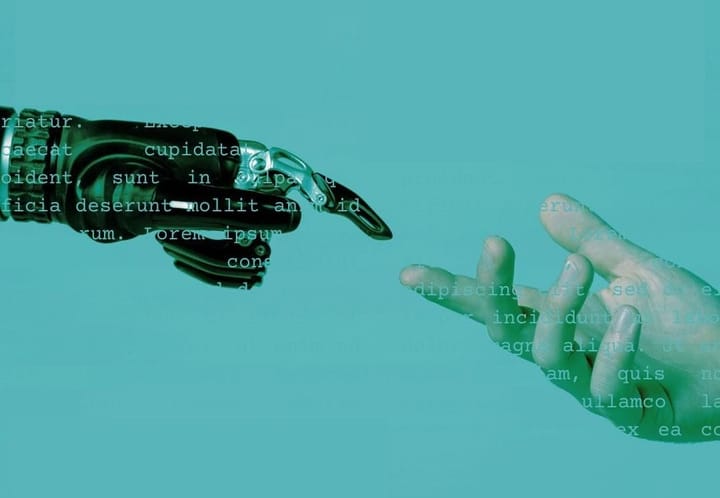Quantum Computing is one of the hottest buzzwords in technology today, but what lies beneath the hype? How does this cutting-edge tech actually work, and why is it being called a game-changer for everything from medicine to cybersecurity? By Veronika Liutarevich
Quantum computing is a broad term describing the field of study of systems that demonstrate quantum behaviour. Quantum behaviour is characterised as exhibiting properties of both waves and particles. It was born out of a very powerful scientific framework of Quantum Mechanics, which has now been proven to describe all of modern physics, apart from gravity (which is a whole other story). Quantum behaviour is shown by all particles individually, but it is slightly more difficult to get them to exhibit it together as a system, and it is also difficult to monitor this behaviour. The most important consequence of quantum behaviour is the ability of quantum bits, or qubits, to be in 2 or more states simultaneously.
Nonetheless, as it happens, there are plenty of researchers across different industries who are not afraid to take on the challenge. There are several ways to perform quantum computing and these are known as modalities. Modalities all use the same mathematical principles, but what differs significantly is what the physical qubits are made of. The 4 main qubit modalities are: superconducting qubits, trapped ion qubits, neutral atom qubits and photonic qubits. Here is an an overview of them:
Superconducting Qubits
This modality is currently the most advanced due to decades of research by industry leaders, such as IBM and Google. Superconducting qubits are nano-scale electrical circuits, where current flows in two directions simultaneously, thus representing two states at the same time. There is a big problem with that: in order to achieve this effect, the circuit needs to exist in superconducting conditions, which means cooled down close to 0 Kelvin, hence the need for large dilution fridges. Not only does it increase the costs and power consumption for running these machines, it also limits the amount of cubits that can be created, as electrical circuitry for each extra qubit in the fridges heats up the system to an unstable level (Riel, 2022).
Trapped Ion Qubits
Trapped ion qubits are ions (atoms with a charge, for which they would have had to have lost or gained an electron) which are contained in an electric or magnetic field. They can be entangled together to achieve quantum behaviour. They are quite stable, but this solution is not very scalable, as control required for large systems of trapped ions is a challenge. Since a large number of qubits cannot be entangled together, a large quantitative system cannot be implemented.
Neutral Atom Qubits
Neutral atoms are similar to trapped ions, but they do not have a charge, and therefore cannot be manipulated using magnetic or electric fields. They are manipulated using lasers, which makes coupling them together a problem. Neutral atom qubits tend to have shorter coherence time and require high coupling precision. Both this method and the previous one require either dilution fridges or high vacuum conditions to function (Riel, 2022).
Now, on to the focus of this article:
Photonic Qubits
Unlike other modalities, photonic qubits do not rely on properties of individual particles, but rather utilise quantum properties of light. This makes them more resilient, as photonic quantum computing does not rely on operations within vacuum or superconductive temperatures. Properties of light are used to represent different quantum states. One such property is polarisation. Photonic qubits are typically created and manipulated using lasers or single photon sources, and their quantum states are controlled through devices like beam splitters, wave plate, and interferometers (Elshaari, 2020). Photons can be transmitted over long distances without any interactions with their environment, which makes them the key player in the Quantum Communications and Quantum Networks (Quantum Internet) fields. Photons can also be entangled, which is a crucial property for quantum systems.
That being said, the low level of interaction between individual photons and other particles (an advantage of photonic qubits for long transmissions) is also its main disadvantage. It makes the creation of 2+ qubit gates much more difficult due to a very weak interaction between photons. This is currently the main challenge in the field.
The main players in photonic quantum computing right now are PsiQuantum, ORCA and XANADU (Dargan, 2022). These companies have focused on using photonic qubits for their mission of building useful and available quantum computers for their advantage of performing operations in the room temperature environment and high stability of the system, but there are a lot of challenges that they, as well as hundreds of researchers across the globe, have not been able to solve yet. Photonic quantum computing is one of the most prominent quantum technologies of our time, and it will be exciting to see the future advancements made in this field.
References:
Cover Image Credit - Unsplash: https://unsplash.com/photos/worms-eye-view-photography-of-ceiling-LqKhnDzSF-8
Dargan, J., 2022. 6 Companies Working with Photonic Quantum Computing 2022. The Quantum Insider. Available at: https://thequantuminsider.com/2022/03/24/6-quantum-computing-companies-working-with-photonic-technology/ [Accessed 15 Oct. 2024].
Elshaari, A.W., Pernice, W., Srinivasan, K., Benson, O. and Zwiller, V., 2020. Hybrid integrated quantum photonic circuits. Nature Photonics, 14(5), pp.285-298. Available at: https://doi.org/10.1038/s41566-020-0609-x [Accessed 15 Oct. 2024].
Riel, H., 2022. Quantum Computing Technology and Roadmap. ESSDERC 2022 - IEEE 52nd European Solid-State Device Research Conference (ESSDERC), Milan, Italy, pp.25-30. doi:10.1109/ESSDERC55479.2022.9947181.
Keywords: Performance evaluation; Computers; Semiconductor device measurement; Quantum computing; Program processors; Qubit; Buildings; quantum computing; superconducting Josephson junctions; roadmap for quantum computing





